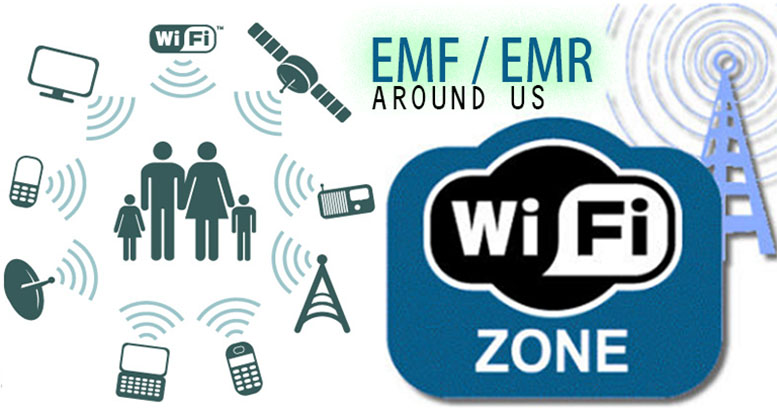The radiation RF-EMF causes DNA damage, tissue heating, and disrupt the blood-brain barrier. These are real-world effects, and ARPANSA is actively involved with the EHS community, medical specialists as well as researchers. The agency will continue to examine research regarding the health impacts of EMF radiation.
RF-EMF damages DNA
The exposure to electromagnetic fields created by humans (EMFs) is associated with DNA damage and other health consequences. EMFs can alter the intracellular ionic levels that are crucial to maintain the balance of electrochemical activity in cells. This can alter the balance of cell metabolism, resulting to DNA destruction. Furthermore emf radiation to EMFs can also trigger an increase in the production of free radicals as well as reactive oxygen species (ROS).
Exposure to RF-EMF radiation has been associated with changes in male germ cell development. This is due to the transformation of germ cells into spermatozoa as well functional maturation when the spermatozoa travel across the epididymis. To determine the effect of RF-EMF exposure on male germ cells, a specifically-designed waveguide device was developed to expose mice that were not restrained to RF-EME in the range of 2.2 W/kg.
In a study that was conducted recently, researchers discovered that exposure to RF-EME caused an oxidative DNA injury in spermatozoa. Sperm DNA fragmentation increased by 18% following one week of treatment and by 23% after five weeks. Furthermore, DNA damage in mitochondria was observed by measuring the level of a biomarker, 8-hydroxy-2-deoxyguanosine (8-OH-dG).
Despite this, RF-EMF radiation is not yet recognized as a true carcinogen. However, several studies have revealed that exposure to RF-EMF radiation can damage DNA integrity in a variety of cell varieties. In one study, scientists exposed Vero cell lines to EMF of 100 Hz for about 45 minutes. They measured DNA damage 48 hours after exposure to determine whether the exposure affected DNA integrity.
The effect of RF-EMF on tissue heating
While the effects of RF EMF are usually thought to have thermal origins, a few studies have demonstrated that non-thermal effects may also be present. These may be the reason for some of the unresolved observations in the epidemiological study of EMF hypersensitivity. It is therefore important to consider the non-thermal effects when conducting an exhaustive review.
The non-thermal effects of RF-EMF could occur at the cell membrane. This is an area where research has been extensively studied. In particular the electrochemical properties of cell membranes is being studied. The current understanding is that RF-EMF energy that exceeds 1 MHz is transferred to the tissue through dielectric and Ionic dissipation. Studies of the theory have suggested that the energy that is transferred to the tissue could be as high as 200 kV/m.
The electrical properties of tissues are regulated by the composition and distribution of water molecules, ions, and other molecules in the body. This determines how absorbed RF EMR is by different tissues. Organs with greater conductivity are likely to absorb more of the EMR field and produce more of an impact. This is why the degree of heating in tissues does not increase steadily from outside to inside, but occurs in hot spots. Bone and fatty tissues are less prone to RF heating than other tissues, because they are not as water-based. content.
The extent of the field's penetration is determined by the frequency and strength of field. Muscle tissue absorbs more field radiation than most tissues, and converts it to heat more effectively. Usually the depth of penetration that RFEMF has is measured in millimeters (mm). The higher the frequency, more shallow the penetration.
RF-EMF causes blood-brain barrier disruption
Researchers have found that RF-EMF could disrupt the blood-brain barrier change sleep patterns as well as neurotransmitter levels. Furthermore the impacts on the effects of EMF in brain activities have been linked to neurodegenerative disorders. For instance, EMF from mobile phones can affect electroencephalogram activity and sleep patterns, as well as the activity of nitric oxide and xanthin oxidase.
Researchers at Vienna University have studied the effects of RF-EMF exposure to brain cells. They also examined the effects of ELF EMF on nervous system. Although the cellular mechanisms that are involved aren't fully comprehended however, there is an obvious connection between exposure to ELF-EMF and depletion of myelin. This relationship might account for the electro-hypersensitivity symptoms of electro-hypersensitivity. Fortunately, there are what is emf radiation proven methods for regenerating myelin within the brain.

what is emf radiation have found that exposure to the frequency of 900 millimeters EMF caused a rise in the permeability of the BBB and also increased the symptoms of neuronal damage in rats. They also observed increased exovasation of albumin into neurons. Additionally, they observed the following: after 30 mins of 900 MHz exposure, 99mTc-MIBI increased its diffusion into the brain. But this effect didn't occur when using Evans blue-based injections.
Despite these findings, RF EMF has no clear mechanism to disrupt the BBB. Research suggests that EMF exposure increases erythrocyte membrane permeability, which may influence the BBB and also increase the efflux of calcium ions. Moreover, the presence of a 99mTcMIBI radiotracer inside the brain has been connected to increased permeability of BBB.
